There are many Companion plants for Chives that you probably did not know about but before we check them out, let us learn a bit more about Chives.
Chives are flowering plant species in the family of plants that produce tasty leaves and blossoms. Common onions, garlic, shallot, leek, scallion, and Chinese onion are close cousins of Chives. It is also a perennial plant that grows over most of Europe, Asia, and North America.
Chives are bulbous herbaceous plants that grow 30-50 cm tall. The bulbs are thin and conical, about 1 cm in width and 2-3 cm in length, and grow in dense clusters from the roots. The scapes (or stems) are hollow and tubular, reaching up to 50 cm (20 in) in length and 2-3 mm in width, having a velvety feel. The blooms are star-shaped and light purple, with six petals.
Chives are a popular herb that can be purchased at grocery shops or grown in home gardens. The green stalks (scapes) and unopened, immature flower buds are chopped and used in omelets, salmon, potatoes, soups, and a variety of other cuisines. These edible flowers can also be used for salads. Chives contain insect-repelling characteristics and may be used to control pests in gardens. It also attracts pollinators to the garden when it blossoms.
Chives flourish in well-drained, organic-rich soil with a pH of 6-7 and full light. They may be cultivated from seed and mature in the summer or early spring of the following year. In milder climates, they may also be planted under a cloche or germinated inside before being transplanted outside.
Although Chives repel insects, it also has pests such as onion maggots and thrips, as well as diseases such as Damping off, Downy mildew, and pink root. The attacks of these pests can be limited by planting them with other plants.
Chives are a fantastic companion plant for many plants because of their insect-repelling capacity and attractive pollinator nectar. It helps to discourage various insects pest from other plants and also attracts pollinators to the garden. Some other plants also help to deter insects from Chives and also complement it in dishes.
In this article, we will learn about Thirty-four (34) Good Companion Plants of Chives and Seven (7) Bad companion plants of Chives, as well as the reasons for planting or not planting them.
Table of Contents
Good Companion Plants for Chives
1. Alliums
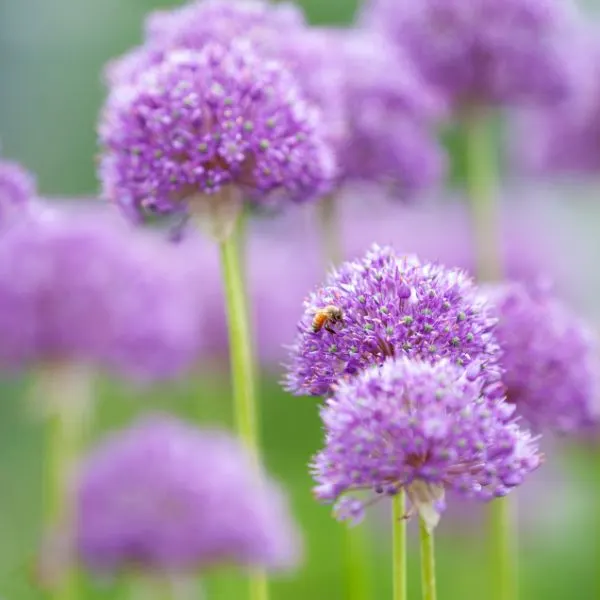
Allium is a monocotyledonous flowering plant genus with hundreds of species. These species are well-known for their culinary applications.
Because chives are an Allium, you may grow them alongside other members of the Allium family, which include onions, leeks, scallions, and garlic, because they need similar soil, water, and sunshine requirements. This makes gardening much easier and more manageable.
Chives and other alliums will help each other thrive, with the former supplying nutrient-rich mulch in the correct locations. They may even aid in the development of stronger smells and tastes.
2. Apple tree

Apple trees are the most extensively planted species and an apple is a fruit produced from an apple tree. When cultivated, rootstock selection and pruning techniques influence the apple tree’s size, form, and branch density.
Chives prevent deer and other creatures that may feed on the apples on the apple tree, such as apple tree borers, ensuring a more robust yield.
Planting chives around your apple trees also helps prevent apple scabs that feed on your apples to decrease their output and development.
It may also be worth growing chives with chamomile, a herb with antifungal and anti-bacterial characteristics that may help protect Apple trees from disease and damage.
3. Basil

Basil is an annual herb that has the potential to become perennial. It is a delicate plant that is used in a variety of cuisines all over the world. Most Basil varieties have a somewhat spicy and minty flavor. It is also called sweet basil or Great Basil.
They are known to generate powerful compounds that help repel insects.
Chives and basil may be grown together on the perimeter of some plants to help defend them from pest assaults.
Chives are an excellent addition to a Basil garden since they have similar growing conditions and need well-drained soil. This makes long-term planting and nurturing easier and more manageable.
4. Bok choy

Bok choy also called pak choi or bok Choi is a variety of Chinese cabbage that is consumed as a vegetable. Chinese variants lack heads and instead have green leaf blades with lighter bulbous bases. It tastes similar to spinach and water chestnuts but is slightly sweeter and has a mildly peppery undertone.
Alliums, such as chives, have a strong aroma that keeps a variety of garden pests away from bok choy plants. Aphids, cabbage worms, slugs, spider mites, and whiteflies are among them, as are bigger garden thieves such as deer and rats.
5. Broccoli

Broccoli is one of the members of the Brassicaceae family. The plant’s massive blooming head, stem, and auxiliary leaves are eaten as vegetables and can be eaten raw or cooked in a number of methods, including stir-frying, steaming, or microwaving.
Chives are fantastic at keeping cabbage worms away from your broccoli because of their pest-repellent fragrance. This contributes to the plant’s growth and yield.
6. Brussels sprouts
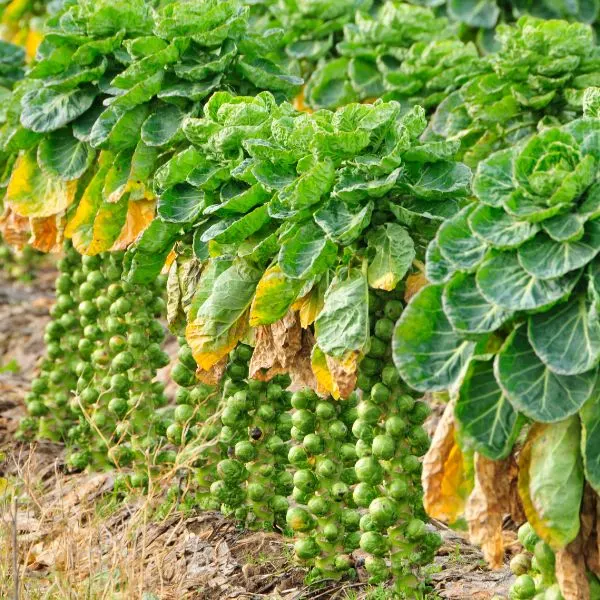
Brussels sprout is a cabbage cultivar of the cultivar group that is grown for its tasty buds. The most common method for preparing Brussels sprouts for cooking is to remove the buds from the stem. The buds are often prepared by boiling, steaming, stir-frying, grilling, slow cooking, or roasting.
Alliums such as chives enhance the sweetness of matured Brussels sprouts. You may also grow Brussels sprouts with garlic.
Alliums have antifungal properties and function as a natural insect repellant in the soil, making them an excellent option for growing near sprouts.
7. Cabbage
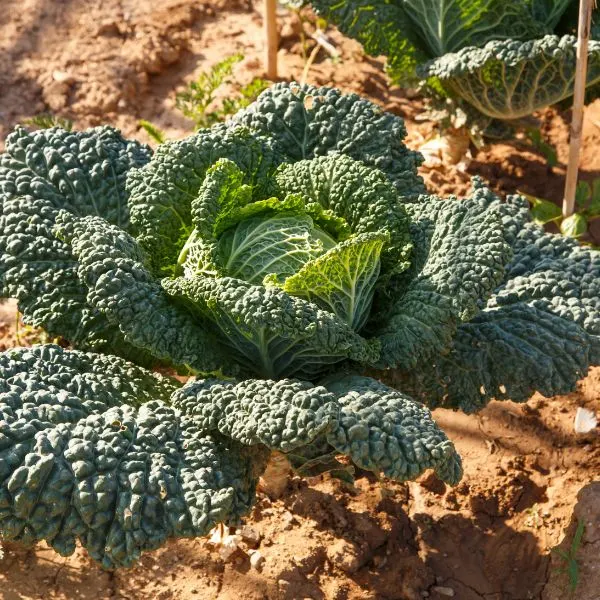
Cabbage is a biennial plant that comes in many varieties. Cabbage is a leafy green, crimson (purple), or white (pale green) plant farmed as an annual vegetable crop for its densely-leaved heads; there are various varieties of cabbage. The bulk of its applications are gastronomic in nature.
Chives have a strong scent that repels cabbage’s principal insect pest; aphids. Chives are a lovely, versatile plant that complements cabbage well and is best grown next to it (rather than harvested from underneath). The pungent perfume of chives repels aphids. Chives may improve the taste of cabbages, and it grows better when planted near chives.
8. Carrot

Carrots are root vegetables that are primarily orange in color, Although purple, red, white, black, and yellow varieties are available. The carrot is a biennial plant that is used in salads and as a vegetable.
Chives may help deter carrot flies from attacking your carrot crop. These flies may rapidly devour the leaves of your carrots, so keeping chives nearby is a fantastic method to prevent this. When planted near carrots, it may also help repel aphids, rabbits, and deer.
Aside from that, growing chives with carrots might help them develop faster, yielding a larger crop with greater taste. They’re also simple to harvest together and often create delicious soup or salad.
9. Cauliflower

Cauliflower is a vegetable plant in which only the plant’s head is edible because it consists of fleshy stalks and partially developed blooms. Its most popular color is white. Cauliflower is used in a variety of dishes, including boiling, frying, grilling, pickling, and steaming.
Chives provide ground cover for cauliflower plants, reducing weeds and avoiding bolting by keeping plant roots cool. Chives provide a strong perfume that attracts pollinators while confusing garden pests such as aphids by concealing the smell of cauliflower plants.
10. Chamomile
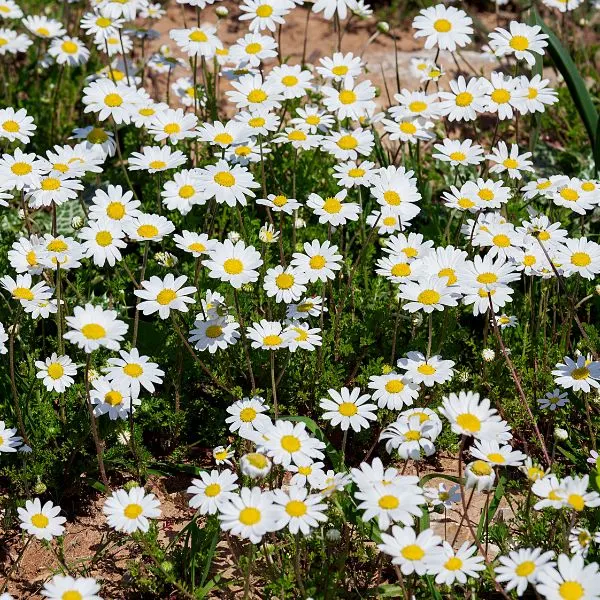
Chamomile is the common name for a family of daisy-like plants known as Asteraceae. Chamomile may be used to flavor foods and beverages, as well as mouthwash and soaps.
Chives are well-known for their ability to repel pests that might harm other plants produced in a garden. Chives may grow alongside any other plant. You may grow chamomile with chives without issue.
11. Celery
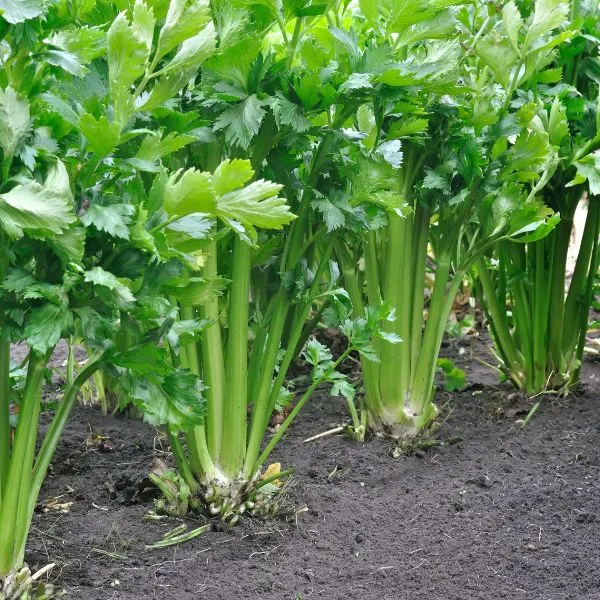
Celery is a vegetable derived from a wetland plant in the Apiaceae family that grows all over the globe. Celery is a vegetable that is eaten all over the world. Because the leaves have a strong flavor, they are used as a flavoring in soups and stews or as a dry herb less often.
Celery is another deer favorite, and with the addition of chives, you’ll likely see fewer of these garden visitors chewing on your crops.
Also, chives tend to bring out a sweeter, juicier flavor in celery harvests, making them an excellent companion for chives.
12. Cilantro
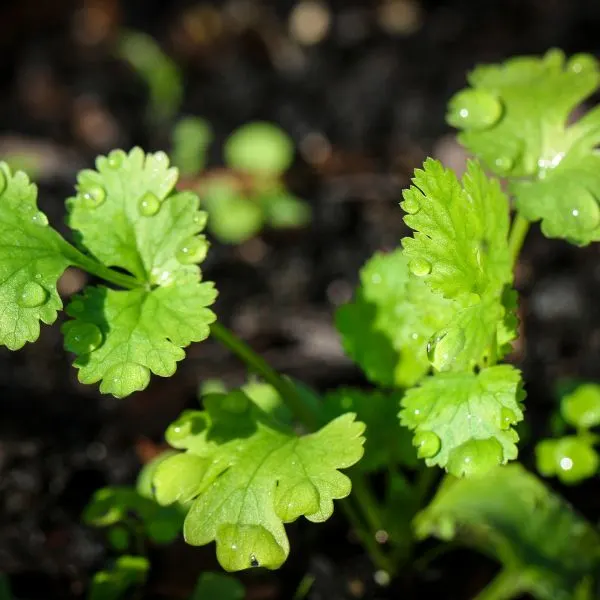
Cilantro is an annual member of the Apiaceae family. Fresh leaves are often used as a garnish for soups, fish, and meat meals, as well as a component in chutneys, salads, salsa, and guacamole.
Cilantro is one of the greatest herbs to grow with chives. When grown near vegetables, both of these herbs may attract insects that fight against pests renowned for harming vegetables.
Cilantro and chives are often grown together since they do not compete for space. Furthermore, each of these plants may thrive under comparable environmental circumstances.
13. Cucumber
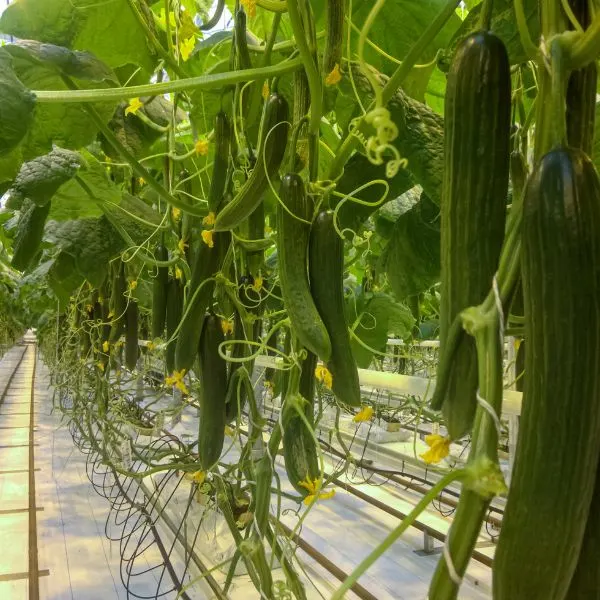
The cucumber is a popular creeping vine plant that produces cylindrical fruits that are used as culinary vegetables. Cucumbers have a light melon aroma and flavor.
Chives are an excellent companion plant for cucumbers because they repel cucumber beetles, which may be a major problem due to the way they damage the plant.
Conveniently, the tastes of cucumber and chives complement each other well, and you may harvest both at the same time. They also complement each other well when served as a salad.
14. Dill

Dill is an annual herb in the celery family that is used to flavor dishes. Dill is best used fresh because it quickly loses flavor when dried. On the other hand, Dill leaves that have been freeze-dried retain their taste for many months.
Chives produce powerful compounds that serve to repel pests like aphids, which are known to feed on Dill.
Dill gets along well with other herbs, including chives. Not only can you use them together in your favorite savory meals, but you can also grow Dill and chives in the same pot. Both plants like wet soil, cold temps, and little fertilization. You won’t have to worry about competing needs damaging your produce if you cultivate these two together.
15. Garlic
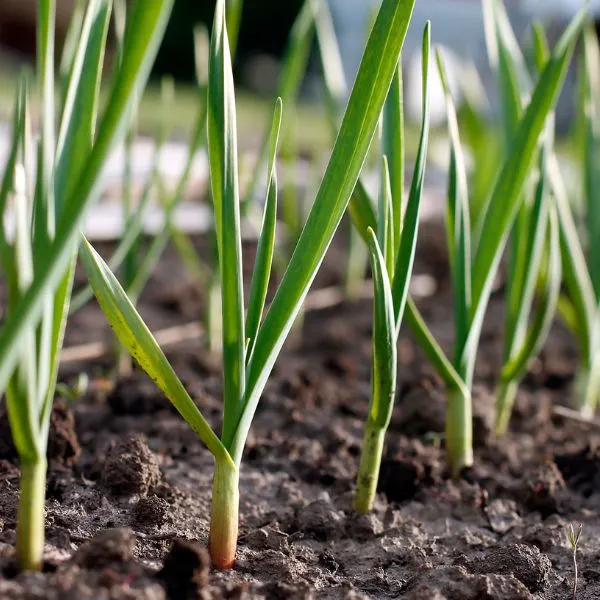
Garlic is a bulbous blooming plant of the Allium family, and the scapes are the main edible part of the plant, which can be eaten raw or cooked.
Garlic is known to repel crop-chewing animals such as deer, rabbits, squirrels, and moose, so growing it with chives in your garden will provide double protection from such animals and other pests.
Furthermore, since they are members of the same family, they have comparable growing requirements, which saves money and time while gardening.
However, it would be best if you avoided growing garlic near big portions of your garden containing allium family members, such as onions, chives, leeks, and shallots. This will allow any pests that feed on them to attack all of the plants at once, allowing you to mix them equally with other crops to solve this issue.
16. Grapes
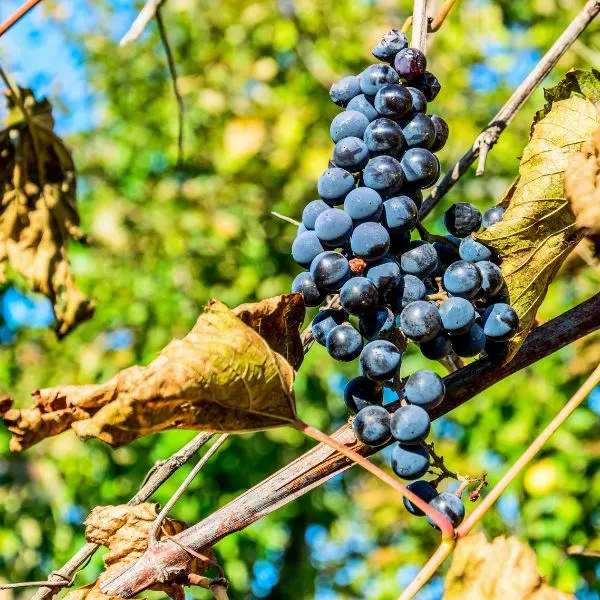
A grape is a fruit, officially a berry, of the woody, deciduous vines of the flowering plant genus Vitis. Grapes are a kind of fruit that comes in a variety of colors, including red, black, dark blue, yellow, green, orange, and pink. And they are often utilized for culinary purposes.
Planting chives close and allowing them to blossom can attract beneficial pollinators and insects while keeping certain pests at bay.
Your alliums’ strong perfume will help keep beetles and aphids away from your grapes, enabling them to last longer than you may anticipate.
Chives might possibly complement the taste of grapes while growing, and they work well together as part of a summer salad out of the ground.
17. Kale

Kale is typically an annual plant grown from seed for its edible leaves, though some varieties are grown as ornamentals. It has green or purple leaves, and unlike cabbage, the central leaves do not form a head.
Growing chives as a border around your kale can help prevent aphids, moths, flea beetles, and mites from penetrating your kale by serving as a barrier.
Furthermore, the increased pollinator’s activity when the chives blossom will keep additional pests at bay. This makes kale a fantastic companion for your Chives in the garden.
18. Kohlrabi

Kohlrabi is a biennial vegetable, also known as German turnip or turnip cabbage. It is a member of the same family as cabbage, broccoli, and cauliflower. The stem and leaves can both be eaten raw or cooked.
Chives, like Dill, can attract bees to your yard and help pollinate your kohlrabi harvest. It has a very strong aroma, which means it will serve as a perplexing deterrent to many species that are likely to begin nibbling away at weaker brassicas.
Chives are ideal for planting alongside kohlrabi since they may deter roving deer from devouring the blander produce in your yard. They have a strong odor and aren’t shaped to the normal deer’s liking, so they may aid in covering your brassicas and keep deer out of your garden.
19. Lavender
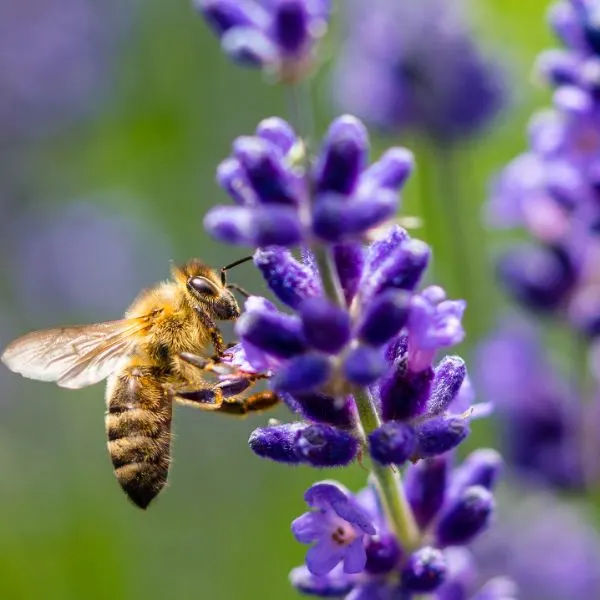
Lavandula is the common name for a genus of flowering plants in the Lamiaceae family (mint family). Most culinary methods employ dried buds, also known as flowers.
Lavender is a laid-back plant that may struggle to survive beside more invasive species, yet it grows well with chives. Growing chives and lavender together has the added advantage of repelling rabbits, deer, and a range of unwanted pests and snails.
Chives will also aid in increasing pollinator attractiveness for lavender, which may begin to die off in drought circumstances or towards the end of its growth cycle. When there is a smattering of chives growing in between, bees will find it simpler to identify less hardy lavender.
20. Leeks
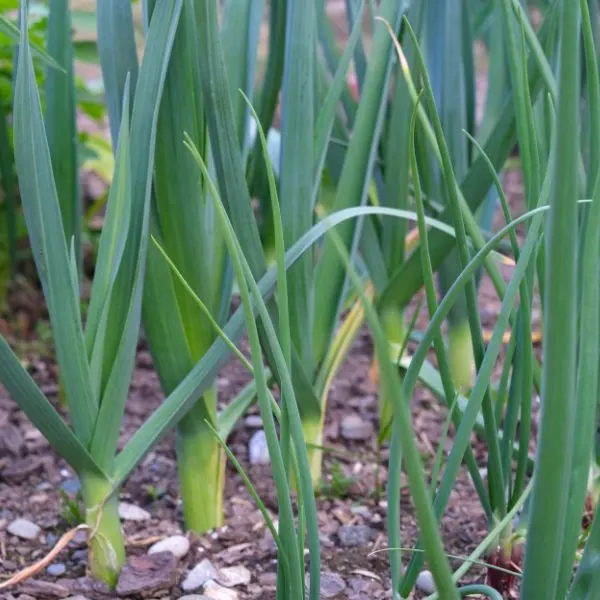
The leek, also known as the broadleaf wild leek, is a vegetable. The plant’s principal edible component is the bundle of leaf sheaths, which is often misidentified as a stem or stalk. Salads can benefit from raw leeks.
Chives and leeks are both members of the Allium family and are known for their pest-repellent scents; growing them in your garden can boost your overall defense against pests and other animals that may wish to attack your garden.
Furthermore, they both thrive under the same growth conditions as other alliums, making them much simpler to cultivate in your garden.
21. Lettuce
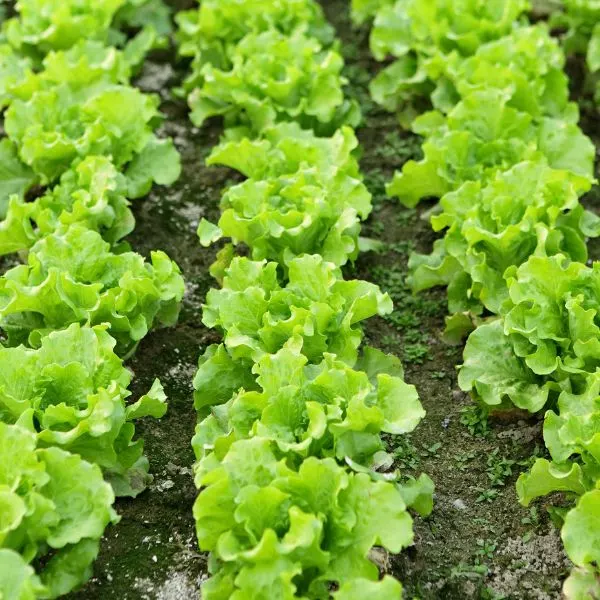
Lettuce is an annual plant that is most commonly found in salads, but it can also be found in soups, sandwiches, and wraps, and it can even be grilled.
Chives may help keep aphids away from your lettuce plants, which is beneficial since aphids kill virtually all of the lettuce foliage when attacked.
Planting chives in rows between lettuce fields is one of the many methods to have a highly efficient insect deterrent.
Again, chives will work as an excellent barrier against both deer and rabbits, so if your lettuce is routinely nibbled by these creatures, it’s worth establishing a natural border of alliums.
22. Marigold
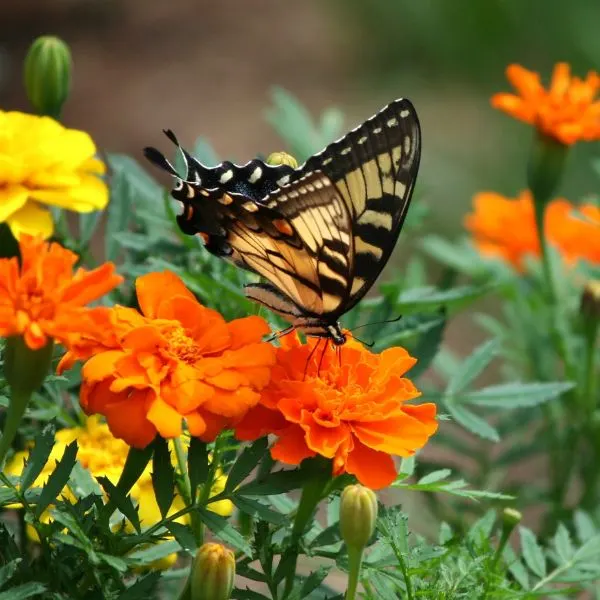
The Marigold is one of the members of the Asteraceae family, mostly constituted of annual or perennial herbaceous plants. It has been used as a flavoring element in cuisine and as a source of marigold oil, an essential oil.
Chives, like marigolds, are perennials that thrive in full light and heat. Their white or purple blooms contrast well with the marigolds’ vivid yellow and orange petals. This creates a wonderful visual backdrop for the marigolds.
Chives may also help reduce the number of spider mites that may attack the Marigold in the garden. Marigolds are thus an excellent companion plant for Chives.
23. Mustard
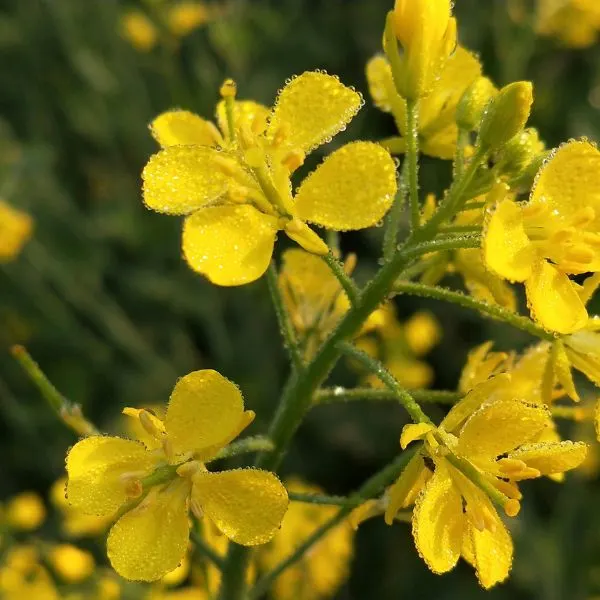
The mustard plant is one of numerous plant species in the family Brassicaceae (the mustard family) (the mustard family). Mustard seed is used as a spice.
Because mustard is susceptible to pests like aphids and flea beetles, chives help mustard by preventing these pests from eating or killing its leaves. This is owing to the repellent fragrance it emits and utilizes to protect the mustard. They also appreciate the company of mustard.
By judiciously combining chives and mustard, you may reduce the chance of harm to the plant from outside influences such as animals.
24. Parsley

Parsley, also known as garden parsley, is a species of a flowering plant. It is widely used as a garnish on potato dishes, goose, rice dishes, fried chicken, fish, lamb, and steaks, as well as in meat or vegetable stews.
When overwintered parsley blooms in the spring, it attracts active pollinators and other beneficial insects that feed on any pests that attempt to eat your chives. Surprisingly, chives and parsley make excellent garden companions.
Chives may also aid in the maintenance of Parsley plants by trimming off the blooms and seed heads as they develop.
25. Peas

Peas are annual plants that live for one year. Peas are often steamed or boiled, which breaks down the cell walls, and increases taste and nutritional absorption.
Planting chives beside your peas will help repel pests, making them ideal companion plants in your yard.
In exchange, parsley feeds nutrients to the chive plants through its leaves and root system. Chives and parsley are excellent companion plants for each other, providing advantages that cannot be obtained when grown individually.
26. Peppers
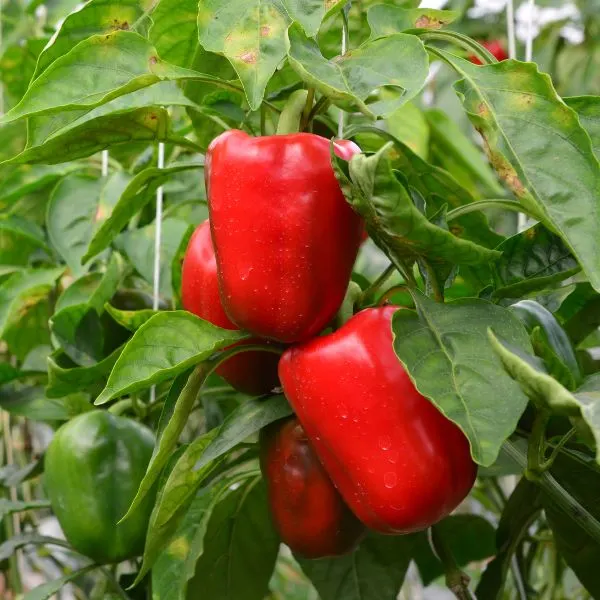
Pepper is the fruit of Grossum Group plants; it is also known as paprika. Bell peppers are considered a vegetable. The popular bell peppers are Green, yellow, orange, and red.
Chives are an excellent companion plant for peppers (both hot and bell) since they help keep snails, aphids, and other bothersome pests away from your pepper plants.
Because of the allium’s protective scent, peppers grown amid chives are likely to be stronger, juicier, and collected in greater amounts.
27. Potatoes
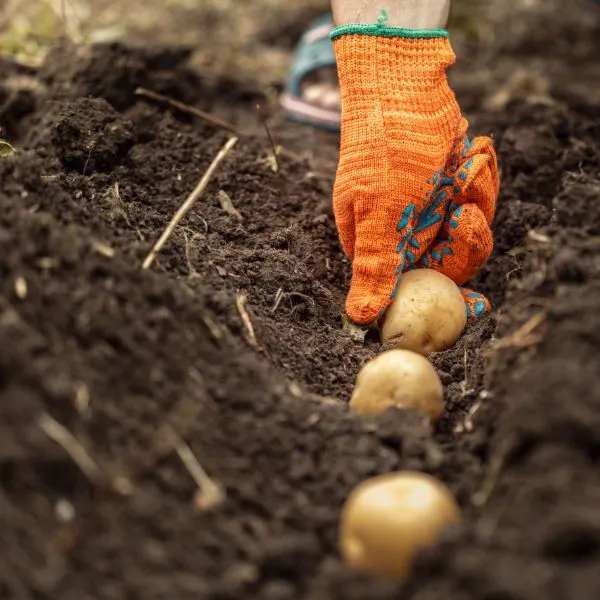
The potato is both a root vegetable, also a fruit native to the Americas. It is a starchy tuber that can be prepared in a variety of ways, including whole or sliced up, skin-on or peeled, with or without spices.
Because of the difficulty in harvesting potatoes, there are few possibilities for companion planting with other root crops. On the other hand, chives are suitable for planting in between your potato harvests due to their shallow roots.
Chives attract beneficial insects, which either consume pests or increase productivity. Furthermore, they are delicious as an addition to a potato salad or baked potato dish.
28. Rhubarb

Rhubarb is a herbaceous perennial with short, thick rhizomes that produce fleshy, edible stalks that are cooked and eaten.
Rhubarb grows in the same soil and growth conditions as chives, making pest and disease control in the garden simpler and basic garden maintenance.
Chives flourish in the mild shade provided by rhubarb, and their shallow roots resist aphids, whiteflies, and other pests. They also dissuade rabbits, who may attack rhubarb.
29. Roses
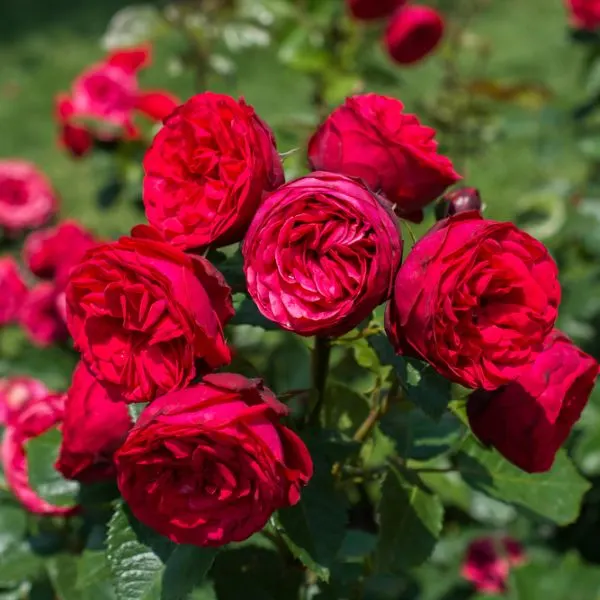
A rose is a blooming woody perennial plant. Their blooms vary in size and form, but they are often enormous and spectacular, with colors ranging from white to yellow to red. Roses are primarily recognized as attractive plants planted in gardens and occasionally inside for their blossoms.
Planting chives near your rose bushes will help them develop faster and prevent the spread of a common disease called black spot. Chives are also said to repel Japanese beetles, which are a major pest of roses and other ornamentals.
Planting chives around your roses or mulch around your rose bushes can attract bees and encourage them to pollinate your plants in the summer. Chives are very robust and resilient, which means they may assist in extending the life of roses.
Roses may bloom intermittently from spring to autumn; chives bloom continuously from spring to summer, so plant your chive seeds in early spring or late winter for a vibrant garden throughout the growing season.
30. Rutabaga
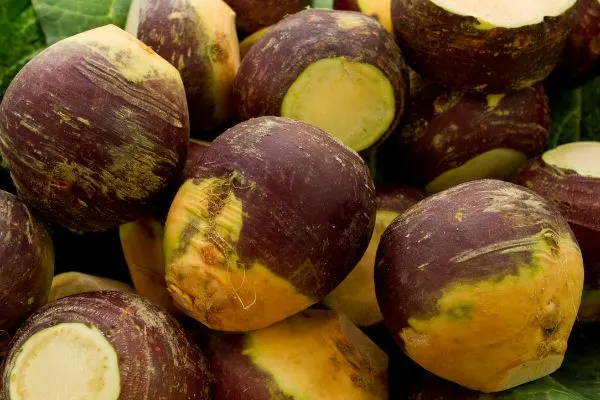
Rutabaga is a root vegetable whose roots are eaten in a variety of ways as human food, and the leaves can be eaten as a leaf vegetable.
Alliums with brassicas are one of the finest combinations, owing to brassicas’ susceptibility to pests and disease. Rutabaga is a Brassica, which makes it an excellent partner for Chives.
Chives assist in repelling pests and animals that may attack the Rutabaga in the garden, thereby enhancing the plant’s development and overall production.
31. Strawberries
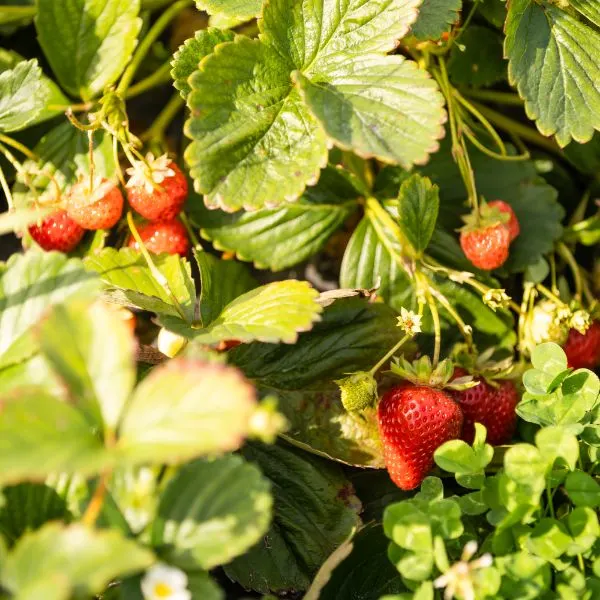
Strawberry is a widely cultivated hybrid species known as strawberries, which are cultivated worldwide for their fruit. The fruit is well-known for its distinctive scent, vivid red color, juicy texture, and sweetness. It is widely eaten, either fresh or in prepared meals, like jam, juice, pies, milkshakes, ice cream, and chocolates.
Chives, like garlic, help repel some of the dangerous insects that assault strawberry plants, such as aphids and beetles.
Aside from that, planting chives near strawberries deters animals from feasting on your plants. Chives will help strawberries grow stronger by attracting bees and wasps, who will pollinate nearby without harming your fruit.
Chives help enrich the soil, which the strawberries need to develop faster. Strawberries are ideal companion plants for Chives because of this.
32. Swiss Chard
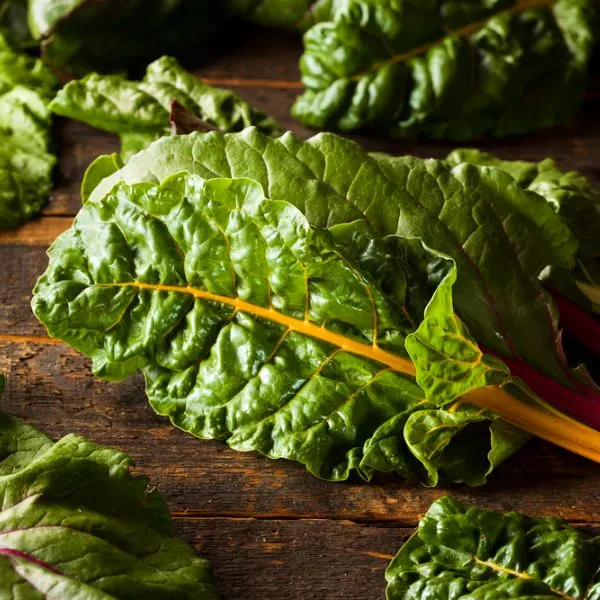
Swiss chard is a green vegetable that grows biennially. Fresh chard is usually used raw in salads, stir-fries, soups, or omelets and has been used in cooking for many years.
Swiss chard is an excellent companion plant for chives because it benefits from the odor of chive plants, which repels pests, and chives aid in improving soil conditions for higher yield and development of the Swiss chard.
Additionally, chives attract helpful insects and bees, which increases the activity of the pollinators in your Swiss chard garden.
33. Tarragon
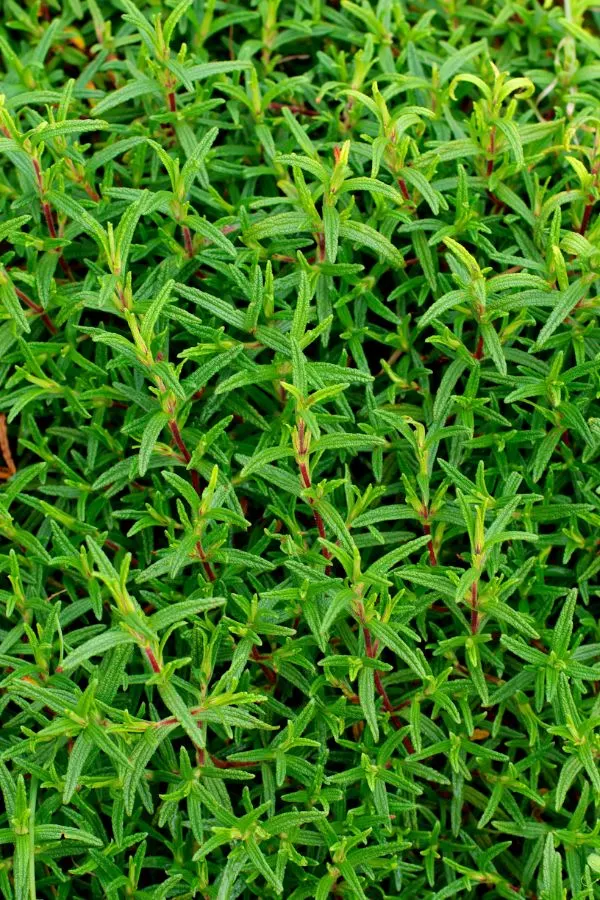
Tarragon, sometimes known as estragon, is a perennial plant that cannot be cultivated from seed because the blooms are sterile. It is particularly well-suited to chicken, fish, and egg dishes, particularly in French cuisine.
Chives are members of the onion family and provide many of the onion family’s companion planting advantages. Chives and tarragon, for example, are excellent companion plants for many vegetables, including brassicas.
If you notice yellow spots on your tarragon leaves or small webs on the undersides of those leaves, you may have a spider mite infestation But Chives also help repel pests that harm tarragon, such as these spider mites
Tarragon and chives thrive in the same climate and soil conditions, so you can plant them together and expect them to thrive. They both prefer a moderate level of dryness and heat.
34. Tomato
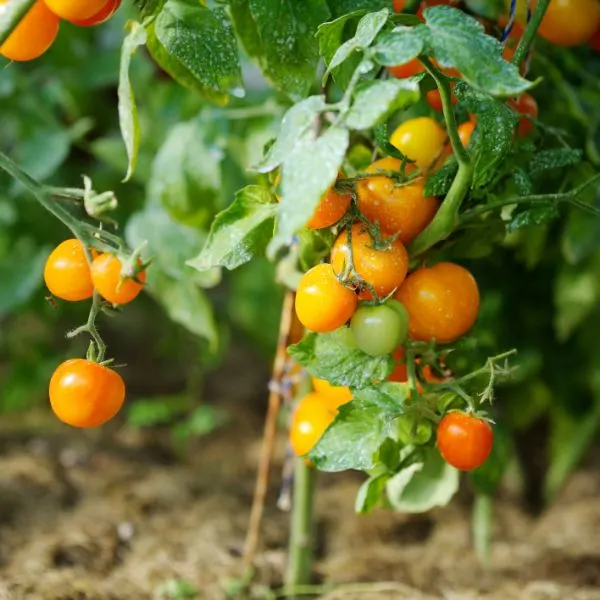
The tomato is an edible berry that is also known as the tomato plant. Tomatoes are considered vegetables in the culinary world. They can be eaten fresh in salads or slices, stewed, added to a wide variety of recipes, or made into ketchup or tomato soup.
Chives repel pests like aphids and hornworms, which love to feed on tomatoes, allowing the tomatoes to develop smoothly.
Tomatoes also taste better when grown near other allium family members, such as chives. They also help your tomato plants produce more fruit. Tomatoes benefit from their fragrant oils and beautiful flowers.
Chives and tomatoes mix well together, so they’re a terrific addition to any dish. Tomatoes are an excellent companion plant for Chives due to their shared benefits.
What not to plant with Chives
1. Asparagus
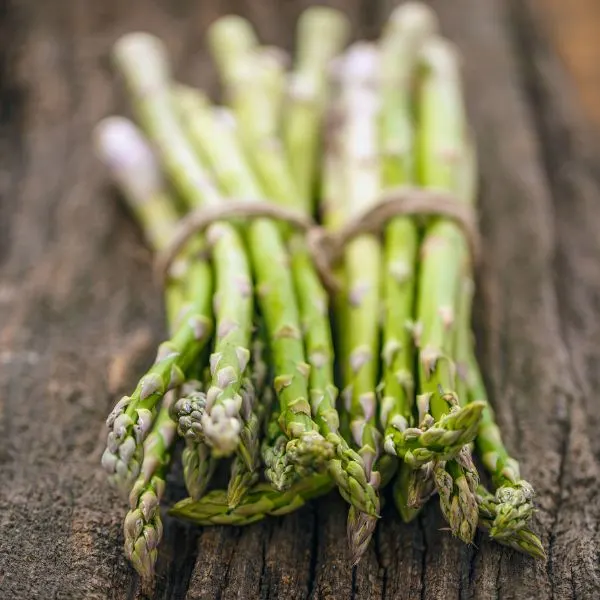
It is a well-known fact that all members of the allium family are Bad companions for asparagus, as they can stunt their growth by secreting chemicals into the Garden soil; this is because of their Allelopathic nature. For this reason, asparagus is a Bad Companion for Chives and should not be planted near chives.
2. Beets
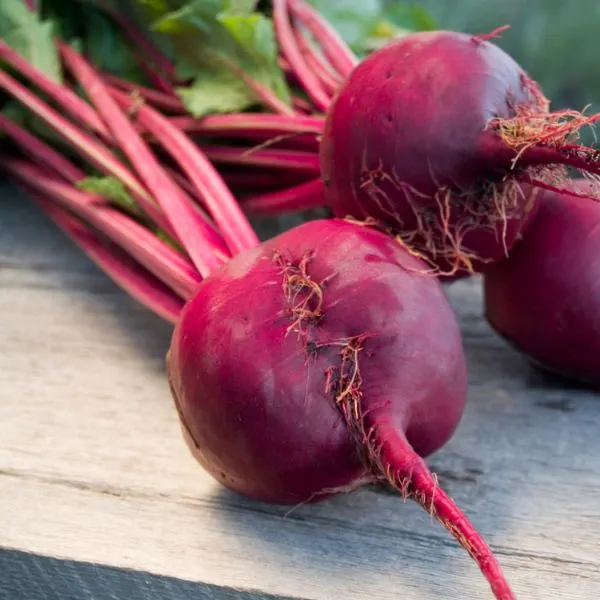
Both chive and beet are allelopathic, making them unsuitable as companion plants. They should be planted far apart if at all they were to be planted in the same garden because they will stunt each other’s growth. This will be a significant loss for you because of their poor yield and your wasted gardening efforts.
3. Pole Beans
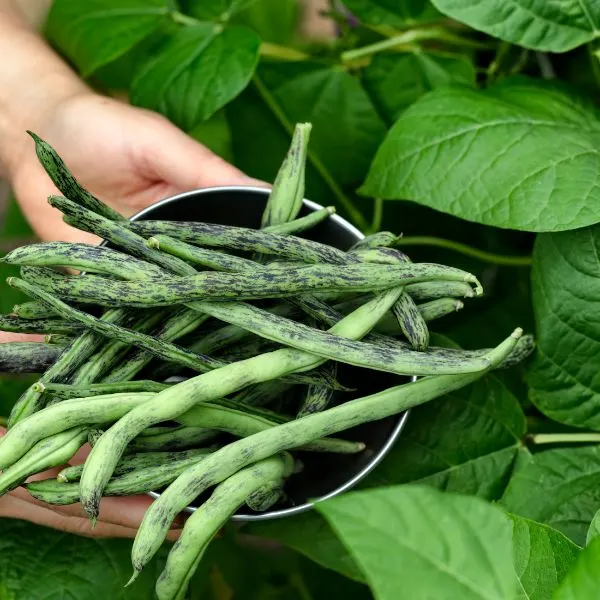
Chives are well-known for their Allelopathic properties, which allow them to kill neighboring plant diseases, whereas wide varieties of beans and legumes release chemicals into the soil, which can limit the potential of their neighbors.
So planting the pole beans near the chives will definitely stunt their growth. Both are poor companion plants for one another.
4. Rosemary
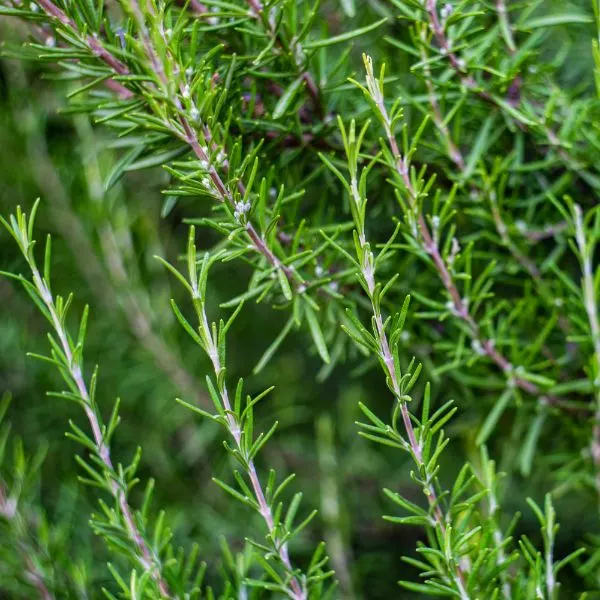
The growing requirements for Rosemary are different from that of Chives, and one of the significant ones is soil requirements. It is recommended that Rosemary be planted in dry soil. Furthermore, chives require more water to grow than Rosemary, and this affects their water requirements and, in turn, their growth. As a result, it is preferable to plant them in separate containers.
5. Sage
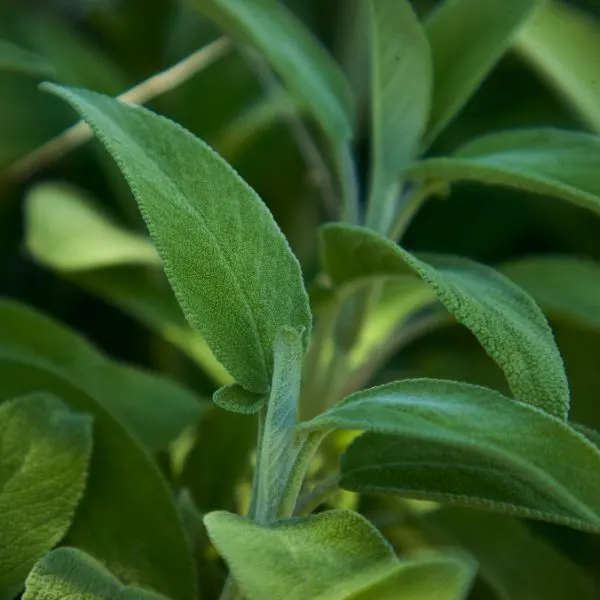
Sage, like any other herb, has quite different growing requirements than chives. Sage prefers dry and sandy soil, which chives do not. This will affect the water requirement of both plants, which will lead to the death of one plant out of the two, so it is best not to plant both together, making Sage a poor Companion plant for chives.
6. Spinach
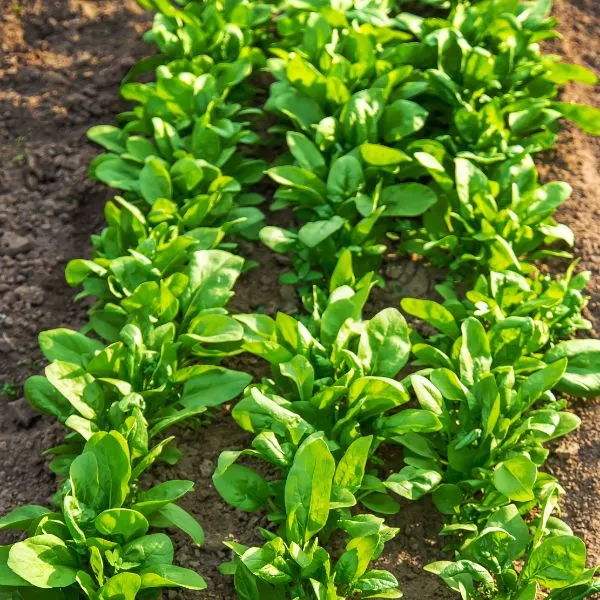
The allelopathic characteristics of Chives also stunt the growth of spinach, as it is noticed that they grow more slowly when planted near chives. This brings up problems like low yield, immature harvesting, and Wasted Gardening effort. Thus spinach is a Bad companion plant for Chives.
7. Thyme
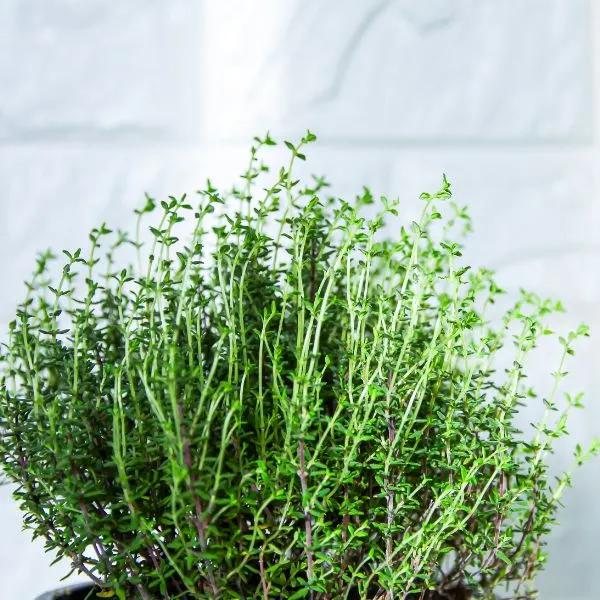
Just like Sage, Chives and Thyme’s growing conditions are opposite, and this will affect the growth of one out of the two if the other plant’s growing conditions are favored; for example, Thyme prefers dry soil, which herbs like chives do not, this will affect their watering and nutrient requirement. So Thyme should not be planted near Chives.
FAQs
Where should I plant chives in my vegetable garden?
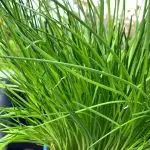
Chives flourish in full light and well-drained, organic-rich soil. Planting rooted clumps during spring, after frost danger has passed, is the simplest and most successful method of growing chives. Growing chives indoors in a bright, sunny location is simple. Chives are harvested by snipping leaves from the plant’s base.
Do chives take over the garden?
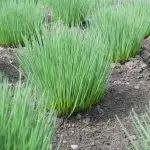
Will my chives grow? The onions and garlic chives will not spread, but the cluster will become bigger (like a bunching of onions). Garlic chives, on the other hand, will reseed if the blossoms are left on the plant long enough for the seeds to develop and fall into the soil.
Should you let chives flower?

Chives can be harvested at any time; nevertheless, the best time is before or after they flower. You may even harvest them while they are blossoming if you know which section to cut. The blossoms are also delicious; Thus, this plant provides a double benefit.
How do I make my chives thicker?

Choose organically rich, well-draining soils to ensure thicker chives. Plant the herb in sandy loam soil. These soils are well-draining and do not retain much water in the root section. Loam soils are made up of a combination of sand, clay, and silt.
How long do chive plants live?

Chives are classified as perennial. If you grow them indoors, these are herbs that (can) last for more than two years if you take care of them and provide light, nutrients, and good potting soil.
How often do you water your chives?
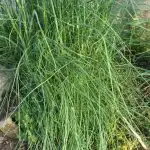
It is best to give chives a thorough watering once or twice a week. After that, let the soil around the herb completely dry before watering again.
Do chives like coffee grounds?

Coffee grounds, like compost, are excellent for fertilizing chive plants because they provide essential nutrients while keeping the soil slightly acidic.
What other herbs can I plant with chives?
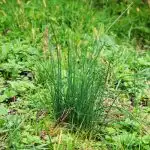
There are several herbs that can be planted with chives, including Parsley, Basil, Oregano, Thyme, Sage, Dill, Garlic, and Cilantro.
Can you plant chives and basil together?

Yes, Basil goes well with Chives and also naturally repels pests. Basil is a great companion plant for several things.
Conclusion
Chives is a flowering plant in the family that produces edible leaves and flowers, and in this article, we learned about the thirty-four (34) Good Companion Plants of Chives and the seven (7) Bad Companion Plants of Chives.
Chives are also high in fiber, provitamin A, vitamin K, and flavonoids. They help to improve your gut’s nutrient uptake efficiency, ensuring that you get as many nutrients from your food as possible. They can lower the risk of cancer, improve heart health, and treat inflammation. Their fiber content may also help with stomach issues.
Chives prefer moist, well-drained soil under a sunny or partially shaded location. They can also be grown in large soil-based compost pots, either alone or in a mixed herb display. Chives are extremely simple to care for. Keep them properly hydrated, particularly during summer’s lengthy dry periods.
More Companion Planting Articles
